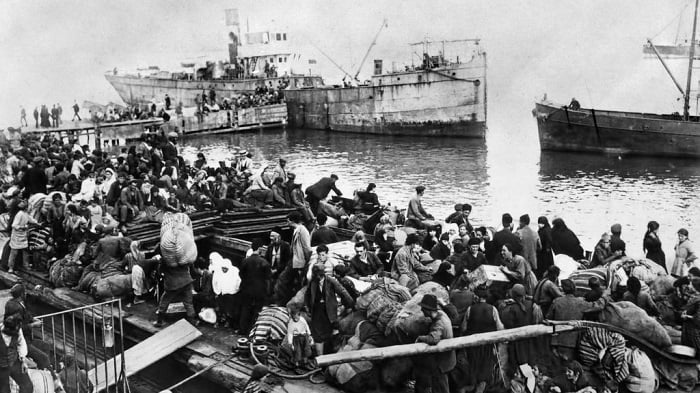
A Japanese ship saved hundreds of Armenians and Greeks from genocide in Asia Minor in 1922 after the Smyrna Catastrophe.
In a most remarkable incident, described in the book Armenia, Australia and the Great War, the captain and crew of the Tokei Maru, a Japanese ship, showed exemplary courage in saving the desperate refugees who were stranded at Smyrna.
Desperate refugees stranded after Smyrna Catastrophe
Hundreds of thousands of Armenian and Greek refugees had fled to the docks of Smyrna after Turkish nationalist troops had entered, burned, and occupied the city on September 9, 1922.
The Turkish occupation was soon followed by the massacre and deportation of Armenian and Greek civilians.
About twenty ships belonging to the WWI allies were in the harbor, with their crews simply sitting by and watching the events onshore unfold. A fire was started in Smyrna’s Armenian quarter four days later, which eventually ended up destroying much of the city.
The captain of the Japanese merchant ship suddenly decided to take it upon himself to rescue the refugees.
The nation of Japan later also provided vital humanitarian aid to the survivors of the Armenian genocide.
Anna Harlowe Birge, the wife of the American professor, Dr. Birge of the International College at Smyrna, witnessed the helpless refugees crowding each other off the wharves as Smyrna began to burn.
Men and women could be seen swimming in the harbor, hoping to be rescued after the catastrophe in Smyrna; many of these people eventually drowned.
Japanese ship saved hundreds of Greek refugees
Birge related that “in the harbor, at that time, was a Japanese freighter, which had just arrived loaded to the decks with a very valuable cargo of silks, laces and china representing many thousands of dollars. The Japanese captain, when he realized the situation, did not hesitate.”
“The whole cargo went overboard into the dirty waters of the harbor, and the freighter was loaded with several hundred refugees, who were taken to Piraeus and landed in safety on Greek shores,” according to Stavros T. Stavridis, who wrote about Birge’s story in an article published in the American Hellenic International Foundation’s policy journal.
Another account of the brave rescue was published on September 18, 1922, in the New York Times.
Refugees constantly arriving…relate new details of the Smyrna tragedy. On Thursday [September 14th]…there were six steamers at Smyrna to transport the refugees, one American, one Japanese, two French and two Italian. The American and Japanese steamers accepted all comers without examining their papers, while the others took only foreign subjects with passports.
The humanitarian actions of the Japanese ship were also recorded at the time by many Armenian and Greek survivors of the Smyrna catastrophe.



